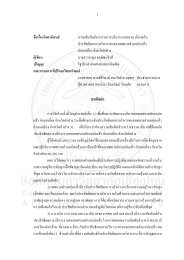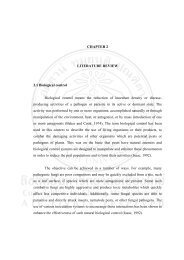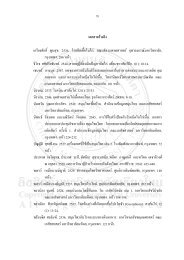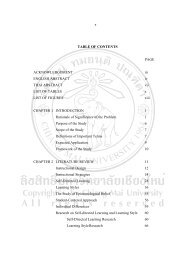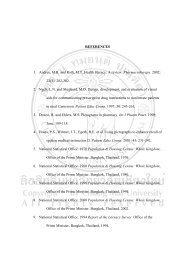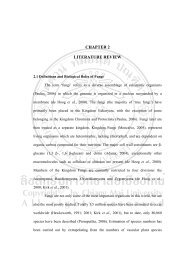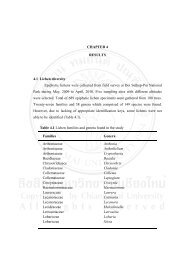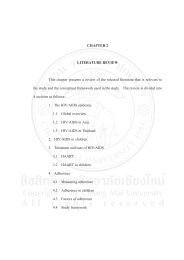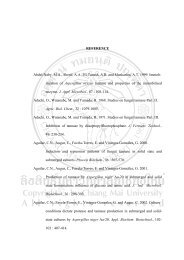CHAPTER II MATERIALS AND METHODS 2.1 Chemicals and ...
CHAPTER II MATERIALS AND METHODS 2.1 Chemicals and ...
CHAPTER II MATERIALS AND METHODS 2.1 Chemicals and ...
Create successful ePaper yourself
Turn your PDF publications into a flip-book with our unique Google optimized e-Paper software.
38<br />
through polyacrylamide gel. Smaller proteins migrate faster through this mesh <strong>and</strong><br />
the proteins are thus separated according to size.<br />
The cells were treated in the same manner as in the RT-PCR analysis. After<br />
treatment, the cells were lysed in ice-cold lysis buffer (10 mM Tris-HCl, pH 7.5, 1<br />
mM MgCl2, 1 mM EGTA, 0.5% CHAPS, 10% glycerol, <strong>and</strong> 5 mM mercaptoethanol).<br />
The protein (30 µg) from the cell lysates was separated by 8% SDS-polyacrylamide<br />
gel electrophoresis <strong>and</strong> was transferred onto a nitrocellulose membrane by<br />
electroblotting. The membrane was probed with the indicated primary antibody.<br />
Following incubation with enzyme-linked secondary antibody, signal was detected by<br />
enhanced chemiluminescence (Thermo Scientific) <strong>and</strong> captured on Kodak X-ray film<br />
(Figure 2.4).<br />
Figure 2.4 The schematic of SDS-PAGE <strong>and</strong> Western blot.




